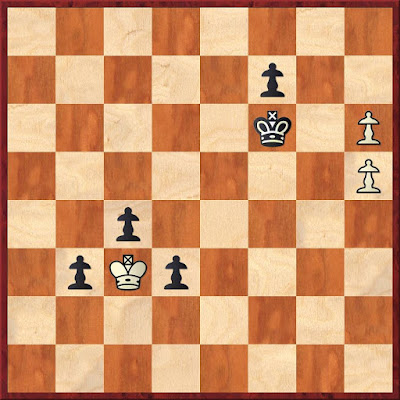Problem 14 in Deiana's collection is a study attributed to Jean-Louis Preti (1856). It is the same as a position that I posted last May, but with colors reversed (see "Three Pawns Problem"). It builds upon technique practiced while solving problem 11, attributed to Josef Kling, presumably from Chess Studies; or Endings of Games by J. Kling and Bernard Horwitz (1851).
White to move
1.Kc2 c4 2.Kc1
Black to move
This position is critical. White will step directly in front of whichever pawn Black moves forward. Soon, all three pawns fall.
2...b3 3.Kb2 d3 4.Kc3
Black to move
This position is the heart of a king versus three pawns. White's king stops all the pawns. However, if the pawns were one square closer to promotion, then one could be promoted to deflect the king from defense of the other's promotion square.
Playing these positions against the computer means playing until checkmate. I checkmated Stockfish 7 on move 24.

















James, thanks for the informative and stimulating post. I've only recently come across the idea of training basic won endgames against an engine to develop technique. While I was aware of the sources you pointed to, I hadn't made the connection between using those sources of endings to train. I think that's going to be a highly effective training method for me. I've been doing endings on chesstempo and going through Mueller's 14-volume Fritz Trainer set, so I appreciate this suggestion.
ReplyDeleteTake Care,
David
Thanks for the note, David. Nothing pleases a writer more than engaged, responsive readers. Thanks for reading my blog. Best wishes.
DeleteMy coach also pointed me at the DejaScacchi endgame problems, as he says my main weakness is my calculation ability (I'm around 1700 USCF). He said that practicing difficult K+P endgames is a great way to build calculation muscle.
ReplyDelete